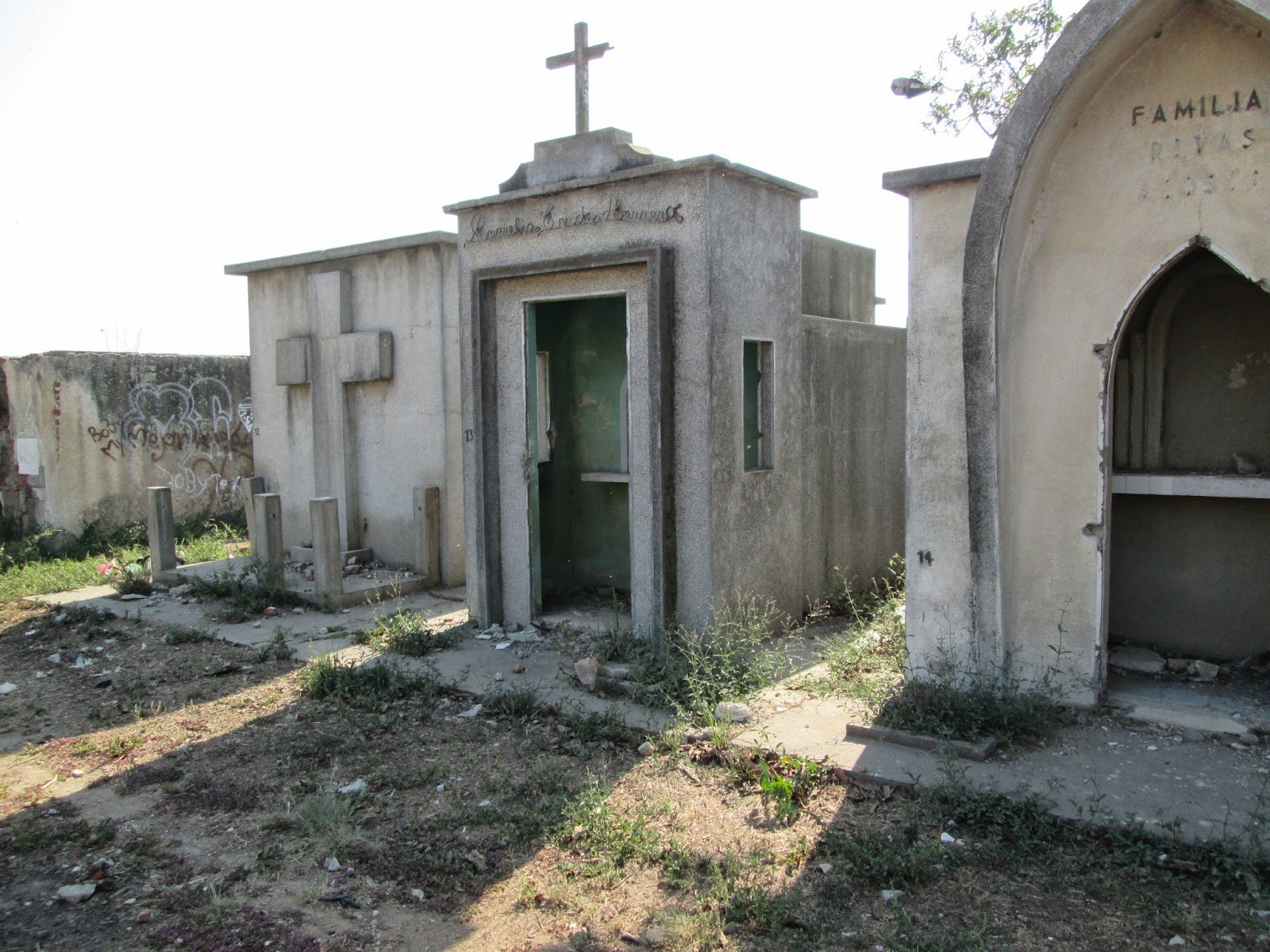Before we left Guatemala City, we visited
the city dump. It is located in a ravine
just below the city cemetery. We viewed
the dump from the cemetery. The stench
is immediate. There are many mausoleums
in the cemetery and many in disrepair – wide open shelf spaces. Some are truly grand, built by wealthy
families.
Below the cemetery in a deep ravine is the
city garbage dump. Garbage trucks run in
and out over broken glass. Children and
families search for leftover food and for objects they might use or sell. The U.N. estimates that roughly 50% of the
nation’s children are chronically malnourished – the fourth highest rate in the
world. High overhead vultures circle
ready to dive on a quick dinner. I asked a Guatemalan woman about the
cemetery. “My mother is in a mausoleum
there; I don’t visit – I don’t feel her presence there.”
Yes, though I walk through the valley of the shadow of death, I fear no
evil for thou art with me, thy rod and thy staff, they comfort me. (Psalm 23)
Photo by Joan Bleidorn
We stopped at a gas station where an
entrance was being prepared. I talked to
one of the workers who were loading cinder blocks into a wheelbarrow. I asked him if he belonged to a union; he
said, “no - only skilled workers belonged to unions.” He may have been mistaken; he probably meant
that day laborers had no union and he was a day laborer- his day rate was 75
quetzales, about $10.
Guatemalan labor opposes the U.S. sponsored neoliberal
trade agreement called DR-CAFTA as well as other injustices. Labor has
had little influence in Guatemala since the overthrow of the reform government
of Jacobo Arbenz in 1954 by the CIA and directed by the Eisenhower
administration.
Since 2007, 64 trade unionists have been
murdered. Luis Antonio Alpirez Guzman
secretary of the Health Workers Union said;
If the bloodshed continues, the entire labor movement will be irrevocably weakened….it is reminiscent of
the chaotic 1980’s and 1990’s era when
student and labor activists were murdered on a mass scale…(Chen, Michelle, “Unions Under Siege in Guatemala,” In
These Times, 8-24-2013.)
The next station I’ll report on was a water
project at Chutzoropi in the province of Quiché, a Province so devastated by
the military that it was once left by Bishop Gerardi under threat. The project was sponsored by the Caritas
Pastoral Social del Quiche. Gerardi was later murdered by the military in Guatemala
City in 1998. A report issued by the Historical Clarification Commission
claimed 200,000 people were slaughtered in the 80’s; the Army committed 165 massacres
against Mayan Villages.
We went into the highlands on unpaved roads
and we were grateful for our very skillful Salvadoran driver, Cristobal. We
were warmly greeted by the community and sat down to meet each other. The men introduced themselves. They hung
around in little groups along with the boys.
As visitors we introduced ourselves – our names, where we were from, and
why we came to visit. All had to be
translated into their indigenous language.
Sister Jan, obviously well known and loved, suggested that the women
introduce themselves. The women and girls sat on benches on one side, beautifully
dressed in their native costumes - Guipils. With some shyness and through
interpreters the women courageously stated their names and something about
their family.
Photo by Sister Jan Gregorich
Sister Jan asked what the water project
meant to them. They explained in their
native language with a couple women speaking in Spanish. Without the water project they had to go two
or three times a day to the river to bring back buckets of water with their
children helping. Washing of clothes had to be done at the river. Thirty-three families
received water in the immediate area of their homes. Sanctions were levied for improper use. Each family paid 10 quetzales, $1.35 per
month, to create a fund to be kept in reserve for emergencies.
I was not able to discern a ‘communidad autónomo’
as in the Mayan communities just north of Guatemala in Chiapas, Mexico. The Mayan people at the water project are not
completely independent of the government in Guatemala City.
I commented to Joanne how beautiful these people
are – I don’t usually say that anywhere else we travel. Joanne responded, “They make their own
clothes with beautiful colors and wear them humbly without embarrassment. They
celebrate who they are.” Joanne talked to a young man who had just returned
from Texas for a visit; he planned to return to Texas to make his way in life. His legal status was not questioned.
I asked the leader of the project if there
was hope for Guatemala; he said, “no!” but then paused and said – “maybe.” Why maybe?
He said, “…if progressive leaders arise in Guatemala.” Is this just ‘Waiting for Godot?’
But for me, this is a reminder of Postville,
Iowa in May of 2012. Federal agents in
helicopters and patrol cars swooped into a small Iowa farm town to raid a food
processing plant where most of the workers were Guatemalans. Three hundred
eighty-nine workers were detained, most of them from Guatemala. Families were separated – children had no idea
what happened to their parents. Sr. Mary
McCauley B.V.M. set up a refuge for the families in the local parish Church –
St. Bridget’s. (N.Y. Times, “Postville,” July 11, 2012.)
Postville protestor, 2008
A colleague talked to one of the Guatemalan men
who lost his family in the ‘80’s during one of the U.S. funded military
massacres. The man had obviously not recovered from the devastation of his
family. The three mental health
professionals who took the trip with us asked how these people survive the
trauma of the genocide of their villages?
I wondered about the re-enacted Holy Week story,… is this pageantry,…therapy?...
or both?

.JPG)

No comments:
Post a Comment